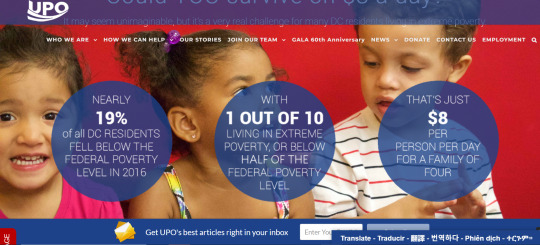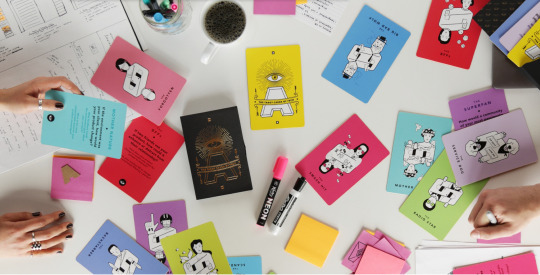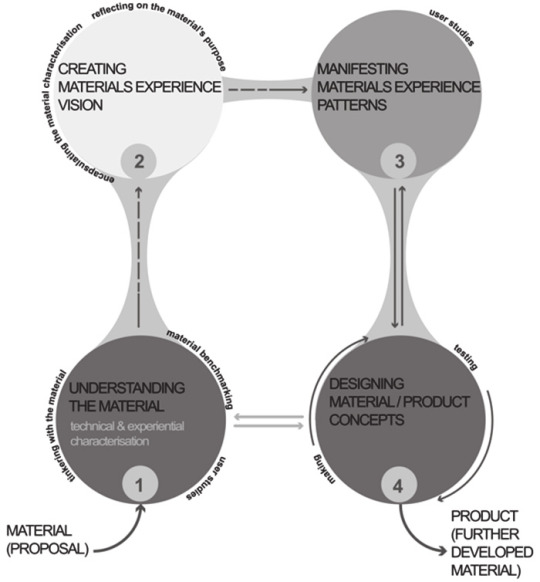#designmethod
Explore tagged Tumblr posts
Text
Maximizing Productivity with an Hourglass: My 5-Year Journey to Top Performance
Table of contentsIntroductionManaging time with an hourglassChoosing an Hourglass Over Modern Time Management ToolsThe Benefits of Uninterrupted Focus with an HourglassAesthetic Satisfaction and Workspace DesignMethods to manage schedules using an hourglass.Understanding the Importance of DeadlinesUnderstanding the Importance of DeadlinesEstimating Timeframes RealisticallyAnalyzing and Adjusting…

View On WordPress
0 notes
Text
Visual Diary 4 - Serving vs. Helping Designs
As I examine how design impacts the audiences we design for, I also look at the purpose of our designs. It's usually thought that human-centered design is serving those that we design for but what is in the distinction between designing with the intent to serve and designing with the intent to help. Many people will think "Well, if I design to serve, isn't that helping?" When we look at the distinctions between the definitions of "serve" and "help", we have a better view of the purpose, audience, and intent of our designs.
To me, an example of a service design is a design for a soup kitchen that will provide the service of feeding those in need. Most times there is no ask or reciprocity expected for those who need this service. It's a basic human need to have food and this service often fulfills that need for the good of those in need. Those who are hungry and are fed are not told that they have to repay the service. Yes, it helps but overall, feeding those without food is a necessary service.
The UPO - United Planning Organization, which has several offices in Washington, DC is an organization that provides help services for residents of the District who are in need. Some programs have requirements where to receive certain help services, you may be required to participate in a training program or adhere to other stipulations. There is a give and take in the design of the help programs vs. providing a service/product where there is no expectation for any repayment. Service design sees a need to fill and designs a plan to fulfill that need. It also considers the audience, impact, timeline, and other factors that correlate with the needs of the audience. The helping service often looks at an audience and sees how they can be helped to obtain the things that they need to survive. A helping service like those at the UPO may come with guidelines that could be considered returns on the investment of helping. Maybe the help for the audience is job training. The return may be that after the program concludes, the trainee has to work at an organization for a period of time (fulfilling a service).


Photo & Logo: (c) 2023 - United Planning Organization, All rights reserved
#HelpingDesign #ServiceDesign #humancentereddesign #designmethod #designleadership
0 notes
Link

1 note
·
View note
Photo

Reassembly of a point cloud model to test the spatial and visual impact of the design in the context. The vertical distance is calculated to distinguish and retain only the existing points of the laser-scanned terrain, indicated in light grey, and the new points of the modified terrain, indicated in color (a). New buildings and new plants distributed individually are assembled with the unchanged context. Values stored as scalar fields, such as the point source of individual components, here indicated in random colors, and values of Leaf Area Density, are integrated into the reassembled model (b). Synthetic points are organized to match the form and data structure of the original point cloud model, such as the classification (c).
In: Urech, Philipp R. W., Maria Angela Dissegna, Christophe Girot, and Adrienne Grêt-Regamey. “Point Cloud Modeling as a Bridge between Landscape Design and Planning.” Landscape and Urban Planning 203 (2020): 103903. https://doi.org/10.1016/j.landurbplan.2020.103903.
#survey#topography#pointcloudmodeling#landscapedesign#pointcloud#als#designmethod#urbandesign#architecture#EthZurich
0 notes
Photo

O próximo co-de-sign (edição Março) acontecerá na Novatics. A designer Raianne Rodrigues (@raifariadesigner) apresentará uma forma de aplicar a design sprint fora de ambientes controlados como laboratórios da academia e de grandes corporações. A palestra para o co-de-sign será dinâmica e contamos com a sua participação! Se quiser se preparar, veja o case no blog da Novatics (https://bit.ly/2TX2qDI). . Acontecerá na próxima quinta-feira, dia 28, a partir das 19h. Esperamos por você! Veja mais detalhes do evento no link da bio! #designsprint #talk #designtalk #codesign #designmethod #designprocess #event #designevent #palestra #digitalproduct #produtosdigitais #brasilia #brazil (em Novatics) https://www.instagram.com/p/BveVUK1FggQ/?utm_source=ig_tumblr_share&igshid=tldrz8pzxjwv
#designsprint#talk#designtalk#codesign#designmethod#designprocess#event#designevent#palestra#digitalproduct#produtosdigitais#brasilia#brazil
0 notes
Photo

Mismatch: How Inclusion Shapes Design Available at www.draw-down.com Sometimes designed objects reject their users: a computer mouse that doesn't work for left-handed people, or a touchscreen payment system that only works for people who have 20/20 vision. Something as simple as color choices can render a product unusable for millions. In Mismatch, Kat Holmes describes how design can lead to exclusion, and how design can also remedy exclusion. Inclusive design methods—designing objects with rather than for excluded users—can create elegant solutions that work well and benefit all. Holmes tells stories of pioneers of inclusive design, many of whom were drawn to work on inclusion because of their own experiences of exclusion. Designing for inclusion is not a feel-good sideline; inclusion can be a source of innovation and growth, especially for digital technologies. It can be a catalyst for creativity and a boost for the bottom line as a customer base expands. And each time a mismatched interaction is remedied, an opportunity is created for more people to contribute to society in meaningful ways. #mismatch #Inclusion #design #color #exclusion #designmethods #interaction (at San Francisco, California) https://www.instagram.com/p/B0lKOzjny1Z/?igshid=19w274sak926s
5 notes
·
View notes
Text
Workshop Design 0.1

I first decided that my first workshop prototype is going to take place in a “Majlis” like feel: late in the evening, I will hold it in my house, on the carpet, with an abundance of arabic coffee, dates and snacks. This will hopefully create a casual enough atmosphere which promotes open discussion without fear of “stupid ideas” or “taboo topics”.
Taking from the workshopping strategies that were researched, I decided to adapt the Futures Wheel and Table phases to social forms that are familiar to the Saudi culture. The Futures Wheel is redesigned to resemble Carrom, while the futures table is now a card “game” in which the four players will use "scenario building” cards to fill in with possible drivers, antagonists...etc, to build entire scenarios off of each other’s cards.
Step 2: PREP
Ideally, I want to design the Majlis with the traditional prints and pillows seen in the picture below. Scouting multiple thrift stores, however, I ran out of luck finding anything similar.

I did, however, find decor items and knickknacks that could be used for the Saudi incense and to store the cards like the one below.

My second best bet was World Cost Market, which sells a lot of oriental looking furniture and decor. As I am most likely designing a board, I wanted to get a floor pillow like the ones below, to prop it on top of. The ones pictured are very reminiscent of home decor used in the Western Regions of KSA (Jeddah, Makkah and Medina being the most prominent cities in that region), where the culture is inspired by the massive influx of merchants and pilgrims.



I also scouted out rugs and pillows to cover the floor and line the walls of my studio, and found these as the closest to those back home, while not seeming too oriental and, well, “appropriated”.

An interesting find were these plastic “picnic” floor covers below, which are in fact Indian, however quite commonly seen in Saudi Arabia in outdoor contexts.
This is most likely due to immigration and merchants.

1 note
·
View note
Text
Materials Driven Design (MDD)
(Karana, E., 2015)
“A method to facilitate a design process in which materials are the main drivers.
We ground our discussion on many disparate but interconnetted sources: existing literature and theories on materials experiences (Giaccardi & Karana, 2015; Karana et al., 2014; Karana, Hekkert, & Kandachar, 2008); ingredients of experience design (Desmet, Hekkert, & Schifferstein, 2011); methodology for material- centered interaction design research (Wiberg, 2014); the material learning that was carried out at the Bauhaus (Wick, 2000) and tinkering with materials in art, craft, and design. [..]
Figure illustrates the MDD Method with four main action steps presented in a sequential manner as: (1) Understanding The Material: Technical and Experiential Characterization (tinkering with the material; material benchmarking; user studies), (2) Creating Materials Experience Vision (The Materials Experience Vision expresses how a designer envisions a material’s role in creating/contributing to functional superiority (performance) and a unique user experience when embodied in a product, as well as its purpose in relation to other products, people, and a broader context (i.e., society and planet), (3) Manifesting Materials Experience Patterns (RQ: What are the interrelationships between the created material experience vision and the formal qualities of materials and products?), (4) Designing Material/Product Concepts. […]MDD starts with a material (or a material proposal) and ends with a product and/or further developed material. […] The journey of the designer from tangible to abstract and then from abstract back to tangible.

3 starting scenarios: [Scenario 1]
Designing with a relatively well-known material,
[Scenario 2]
Designing with a relatively unknown material,
[Scenario 3]
Designing with a material proposal with semi-developed or exploratory samples”
Text from Karana, E., Barati, B., Rognoli, V., & Zeeuw van der Laan, A. (2015). Material driven design (MDD): A method to design for material experiences. International Journal of Design, 9(2), 35-54.
(Valentina notes)
How to apply and adapt MDD method to a specific local context in order to propose a future material culture?
BIBLIOGRAPHY
Desmet, P., Hekkert, P., & Schifferstein, R. (2011). Introduction. In P. Desmet & R. Schifferstein (Eds.), From floating wheelchairs to mobile car parks: A collection of 35 experience-driven design projects (pp. 4-12). Den Haag, the Netherlands: Eleven.
Giaccardi, E., & Karana, E. (2015). Foundations of materials experience: An approach for HCI. In Proceedings of the 33rd SIGCHI Conference on Human Factors in Computing Systems (pp. 2447-2456). New York, NY: ACM.
Itten, J. (1975). Design and form: The basic course at the Bauhaus and later. New York, NY: John Wiley & Sons.
Hekkert, P., & van Dijk, M. (2011). Vision in design: A guidebook for innovators. Amsterdam, the Netherlands: BIS.
Karana, E., Hekkert, P., & Kandachar, P. (2008). Materials experience: Descriptive categories in material appraisals. In Proceedings of the Conference on Tools and Methods in Competitive Engineering (pp. 399-412). Delft, the Netherlands: Delft University of Technology.
Karana, E., Pedgley, O., & Rognoli, V. (2014). Materials experience: Fundamentals of materials and design. Oxford, UK: Butterworth-Heinemann.
Tung, F. W. (2012). Weaving with rush: Exploring craft-design collaborations in revitalizing a local craft. International Journal of Design, 6(3), 71-84.
Wiberg, M. (2014). Methodology for materiality: Interaction design research through a material lens. Personal and Ubiquitous Computing, 18(3), 625-636.
Wick, R. K. (2000). Teaching at the Bauhaus. Stuttgart, Germany: Hatje Cantz.
0 notes
Video
youtube
Scenes: A New Method and Tool to Create Storyboards from SAP
Storyboards are a powerful way to communicate user requirements and to validate ideas before they are fully designed or implemented. They are used during the earliest stages of the design process to visualize design solutions, and to create a common understanding about the problem to be solved. But what if there is not enough time to draw them or the necessary skills are missing?
More to know: https://experience.sap.com/skillup/scenes-new-method-tool-create-storyboards/
0 notes
Photo

#archimodel #archilovers #アーキテクチャ #ākitekucha #معماری #instagram #homesweethome #sunny #weho #rooftop #pool #terraza #designc #maxxi #zahahadid #zahahadidarchitects #sculpture #culture #gallery #minimalism #couture #edgy #white #designmethod #simplicity #aesthetics #rsa_minimal #dailypic #vsco #vscocam
#minimalism#ākitekucha#designc#designmethod#dailypic#zahahadid#instagram#معماری#archimodel#couture#gallery#vsco#maxxi#aesthetics#terraza#simplicity#sunny#weho#archilovers#rsa_minimal#rooftop#アーキテクチャ#white#sculpture#edgy#pool#homesweethome#vscocam#zahahadidarchitects#culture
0 notes
Text
Five Why's
Five Why's: A power technique to help you get to the root of the matter to design for the better #design #designmethods #innovation
The Power of Why Children learn a lot and quickly because they are curious. Children don’t stop asking questions, yet as adults we often do. The Five Why’s is a popular, simple, and powerful means to create that childhood sense of wonder and curiosity in your team. It is also a great means to do something called a root cause analysis. The technique is said to have originated with Toyota,…

View On WordPress
0 notes
Photo

Rearrangement of the vegetation in a point cloud model according to a new terrain. Laser-scanned vegetation points (a) are normalized by substracting the elevation of the terrain from adjacient points (b). The points can then be modeled on a new topography either by adjusting their elevation values (c) or by using a library of individual laser-scanned models to populate the terrain surface (d).
In: Urech, Philipp R. W., Maria Angela Dissegna, Christophe Girot, and Adrienne Grêt-Regamey. “Point Cloud Modeling as a Bridge between Landscape Design and Planning.” Landscape and Urban Planning 203 (2020): 103903. https://doi.org/10.1016/j.landurbplan.2020.103903.
#survey#topography#pointcloudmodeling#landscapedesign#pointcloud#als#designmethod#urbandesign#architecture#EthZurich
0 notes
Photo

🌐www.techyrick.com . . #methodseven #ancientmethods #trainingmethods #toolsofmytrade #barbertools #toolstoday #paintoolsai #traditionalmethods #tools #handtoolsonly #woodtools #hackingtools #hottools #coffeebrewingmethods #handtools #researchmethods #toolsforlife #hvactools #subliminalmethods #protools #designmethods #studymethods #activatormethods #toolsinstagramgratis #teachingmethods #oldtools #snapontools #healingenergytools #beautytools #painttoolsai https://www.instagram.com/p/CQdSbhcB__o/?utm_medium=tumblr
#methodseven#ancientmethods#trainingmethods#toolsofmytrade#barbertools#toolstoday#paintoolsai#traditionalmethods#tools#handtoolsonly#woodtools#hackingtools#hottools#coffeebrewingmethods#handtools#researchmethods#toolsforlife#hvactools#subliminalmethods#protools#designmethods#studymethods#activatormethods#toolsinstagramgratis#teachingmethods#oldtools#snapontools#healingenergytools#beautytools#painttoolsai
0 notes
Photo

#祈禱天氣不曬、涼爽、無雨🙏🌤 .Business opportunities are like buses, there’s always another one coming. 商機就像公車,下一班總是會來 2017 9/9-9/10內地小搖滾在集集火車站、樟腦出張所👈Bullet在集集✌️兩天陪你渡過最後夏日的音樂祭🌈 #內地搖滾 Inland Rock X #森林好事多 合作市集-地點🔍集集樟腦出張所 後方巷子 來聽音樂搖搖唷~集集的文青活動~ ✌️內地搖滾👍時間:9/9 13:00-20:00 、9/10 13:00-18:00 #PeterPan Best wishes. 祝福你 参與者 喜樂平安 #burrito #bullet #burger #foodtruck #內地搖滾inlandrock #集集火車站 #樟腦出張所 #森林好事多 #內地搖滾InlandRock #MeetingDesign #WeiFengExhibit #WeiFengExhibit #WatermelonCamp #WatermelonCamp #DesignManagement #DesignMethods #DesignPlanning #台灣樂團潮 #音樂會 #活動與慶典 告訴還沒來過內地搖滾的朋友 2017年的內地小搖滾小歸小但是志氣氣氛依然超級非常高非常棒! 特別感謝各位支持我的朋友的伙伴 #集集鎮公所 #激進工作室 幕後工作人員 #成大樂器音響 的眾兄弟 #微風燈光音響 現場執行人員 #微風展覽 同事伙伴 這場有過程記錄有我們的血汗一定會更帥 #台灣內地是南投 演出全陣容: 巴奈 / 胖虎 punkhoo / P!SCO / Burning Island 火燒島 饒舌教授 張睿銓 / 非人物種 Inhuman / 屍體派對 台語歌王 府城流浪漢 - 謝銘祐與 麵包車樂團 怕胖團 PA PUN BAND / 厭世少年 Angry Youth 顯然樂隊Obviously / 葛洛力 gloRy / 江松霖 / 好樂團 義正20170910(在 集集火車站)
#微風燈光音響#burrito#weifengexhibit#活動與慶典#bullet#designplanning#成大樂器音響#內地搖滾inlandrock#peterpan#樟腦出張所#祈禱天氣不曬#集集鎮公所#burger#內地搖滾#微風展覽#激進工作室#meetingdesign#集集火車站#foodtruck#台灣樂團潮#森林好事多#watermeloncamp#音樂會#designmethods#designmanagement
1 note
·
View note
Text
PLAYTEST 2
For the second prototype, I focused on creating more structure in the workshop by presenting the Agenda and objectives on the board. In addition to that, I made sure to time the activities, explain the Future Cones early on, and direct conversation when it drifts to other topics (there was a big urge to talk about that last Game of Thrones episode).
I also redesigned the board out of real wood and layers of polyurethane for maximum slide. The chips were also designed to be bigger so that there is more surface area to write, and made from acrylic.


The cards were also redesigned to be 6 instead of 8, and were made out of 1/4 inch white acrylic for reusability.
I also designed extra consequence chips I used to give an example of what a consequence could sound like, and how to play the game.

Upon observing the workshop, I noticed how efficient the acrylic material ended up being, as the participants liberally wrote erased and rewrote their consequences while they were vocalizing them to the group and discussing how to word them.
There was again a lot of excitement when landing the chips on the circles. Despite designing this iteration to include 1st tier and 2nd tier consequences (aka direct and indirect) on the design of the board, it seems as though the more signals they were eager to reveal, the more they were focused on generating newer consequences based on the revealed signals.


By the end of the futures wheel, participants asked if they could add in more consequences than could fit on the board, which they could, so perhaps I could increase the number of landing circles on the board so as to encourage generating more consequences.
For this iteration, the participants were instructed to fill in 2 challenge cards instead of 4 like in the previous workshop. These two challenge cards should then be the focus of two futures designed by two pairs using the 6 card deck.
With this change, I noticed that the scenario building activity went from an individual activity to something that generated conversation between two people, and moved along way faster than when each participant had to fill in 8 cards.



Once the pairs finished building their futures, they then presented them to the other pair, named them and placed them within the Future Cones, before moving on to designing an object / space / service for their future.


The two final futures were:
The two final futures were
1. Vetopia
A future where a large % of Saudi citizens become invested in studying animals and becoming veterinarians > The community built was one that had Veterinary schools, advanced clinics, research labs, and embraces animal inclusive spaces.
2. Pet Smart
A future where animal rights push for the teaching of proper pet ownership practices. The pair produced an application that teaches kids and adults how to properly take care of their pets through fun interactive activities. (inspired by Nintendogs apparently)
0 notes
